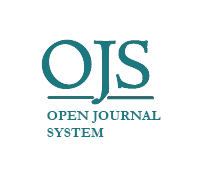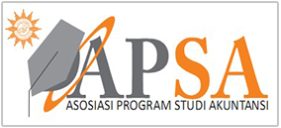Investigation on key factors promoting internal control implementation effectiveness in higher education institution: The case of Indonesia
DOI:
https://doi.org/10.22219/jrak.v11i3.18637Keywords:
Key Factors, Internal Control, Higher Education Institutions, IndonesiaAbstract
This study aims to investigate the key factors promoting internal control implementation effectiveness in Indonesian Higher Education Institutions (HEIs). This study uses a qualitative approach by employing interviews as data collection technique. 13 informants were involved, consisting of management members of internal control unit, top management of HEI, and HEI accreditation assessor. The results reveal that to achieve effective implementation of internal control, seven key factors must be considered, including: (1) Management and foundation roles; (2) Awareness of all organization members; (3) Sufficient and competence of human resources; (4) Internal auditor attitude; (5) Organizational climate; (6) IT support; and (7) Funding support. The results of this study address research gaps related to internal control studies in the context of HEI, especially in developing countries, which according to Chalmers et al. (2019) still gets very little attention by accounting scholars.
Downloads
References
Abdullahi, M. H., Abdullahi, M., & Muturi, W. (2016). Effect of internal control systems on financial performance of higher education institutions in Puntland. International Journal of Economics, Commerce and Management, 4(12), 762-780.
Ahyaruddin, M., & Akbar, R. (2016). The relationship between the use of a performance measurement system, organizational factors, accountability, and the performance of public sector organizations. Journal of indonesian economy and business, 31(1), 1-22.
Akbar, R., Pilcher, R., & Perrin, B. (2012). Performance measurement in Indonesia: the case of local government. Pacific Accounting Review, 24(3), 262-291.
Al-Thuneibat, A. A., Al-Rehaily, A. S., & Basodan, Y. A. (2015). The impact of internal control requirements on profitability of Saudi shareholding companies. International Journal of Commerce and Management, 25(2), 196-217.
Benbasat, I., Goldstein, D. K., & Mead, M. (1987). The case research strategy in studies of information systems. MIS quarterly, 369-386.
Braun, V., & Clarke, V. (2006). Using Thematic Analysis in Psychology. Qualitative Research in Psychology, 3(2), 77-101.
Chalmers, K., Hay, D., & Khlif, H. (2019). Internal control in accounting research: A review. Journal of Accounting Literature, 42, 80-103.
Chambers, A. D. (2014). New guidance on internal audit–an analysis and appraisal of recent developments. Managerial auditing journal, 29(2), 196-218.
Cohen, J. R., Krishnamoorthy, G., & Wright, A. M. (2008). Form versus substance: The implications for auditing practice and research of alternative perspectives on corporate governance. Auditing: A Journal of Practice & Theory, 27(2), 181-198.
COSO. (2013). Internal Control-Integrated Framework. Durham: American Institute of Certified Public Accountants (AICPA).
Doh, S., Jang, D., Kang, G.-M., & Han, D.-S. (2018). Research Funding and Performance of Academic Researchers in South Korea. Review of Policy Research, 35(1), 31-60. doi:https://doi.org/10.1111/ropr.12261
Doyle, J., Ge, W., & McVay, S. (2007). Determinants of weaknesses in internal control over financial reporting. Journal of Accounting and Economics, 44(1-2), 193-223.
Duh, R.-R., Chen, K.-T., Lin, R.-C., & Kuo, L.-C. (2014). Do internal controls improve operating efficiency of universities? Annals of Operations Research, 221(1), 173-195.
Dwianika, A., Murwaningsari, E., & Suparta, W. (2020). Analysis of water awareness, accountability, and governance to improve sustainability of firm’s performance in urban areas. Geographia technica, 15(1), 35-42.
Francis, J. J., Johnston, M., Robertson, C., Glidewell, L., Entwistle, V., Eccles, M. P., & Grimshaw, J. M. (2010). What is an adequate sample size? Operationalising data saturation for theory-based interview studies. Psychology and Health, 25(10), 1229-1245.
Gramling, A. A., & Myers, P. M. (1997). Practitioners' and users' perceptions of the benefits of certification of internal auditors. Accounting Horizons, 11(1), 39.
Grant, G. H., Miller, K. C., & Alali, F. (2008). The effect of IT controls on financial reporting. Managerial auditing journal, 23(8), 803-823.
Guba, E. G., & Lincoln, Y. S. (1989). Fourth generation evaluation: Sage.
Halpin, A. (1971). Theory and Research ini Administration. New York: Macmillan Company.
Harrington, C. (2004). Internal audit's new role. Journal of Accountancy, 198(3), 65.
Hermanson, D. R., Smith, J. L., & Stephens, N. M. (2012). How effective are organizations' internal controls? Insights into specific internal control elements. Current Issues in Auditing, 6(1), A31-A50.
Jing, F. F., Avery, G. C., & Bergsteiner, H. (2011). Organizational climate and performance in retail pharmacies. Leadership & Organization Development Journal, 32(3), 224-242.
Kabuye, F., Nkundabanyanga, S. K., Opiso, J., & Nakabuye, Z. (2017). Internal audit organisational status, competencies, activities and fraud management in the financial services sector. Managerial auditing journal, 32(9), 924-944.
Karatepe, O. M. (2013). The effects of work overload and work‐family conflict on job embeddedness and job performance: The mediation of emotional exhaustion. International Journal of contemporary Hospitality management, 25(4), 614-634.
Long, T., & Johnson, M. (2000). Rigour, reliability and validity in qualitative research. Clinical effectiveness in nursing, 4(1), 30-37.
Marshall, C., & Rossman, G. B. (2014). Designing qualitative research: Sage publications.
Mihret, D. G., & Yismaw, A. W. (2007). Internal audit effectiveness: an Ethiopian public sector case study. Managerial auditing journal, 22(5), 470-484.
Miles, M. B., & Huberman, A. M. (1992). Qualitative data analysis. USA: sage.
Miles, M. B., & Huberman, A. M. (1994). Qualitative data analysis: An expanded sourcebook: sage.
Morse, J. M., Barrett, M., Mayan, M., Olson, K., & Spiers, J. (2002). Verification strategies for establishing reliability and validity in qualitative research. International journal of qualitative methods, 1(2), 13-22.
Nawawi, A., & Salin, A. S. A. P. (2018). Internal control and employees’ occupational fraud on expenditure claims. Journal of Financial Crime, 25(3), 891-906.
Oliver, P. (2013). Writing your thesis. California: Sage Publications.
Pratolo, S., Sofyani, H., & Anwar, M. (2020). Performance-based budgeting implementation in higher education institutions: Determinants and impact on quality. Cogent Business & Management, 7(1), 1786315.
Ramadhan. (2020). ICW Sebut Praktik Korupsi di Perguruan Tinggi Bukan Hal Baru, Ini Modus-modusnya... Retrieved from https://nasional.kompas.com/read/2020/06/03/19195361/icw-sebut-praktik-korupsi-di-perguruan-tinggi-bukan-hal-baru-ini-modus?page=all.
Rendon, J. M., & Rendon, R. G. (2016). Procurement fraud in the US Department of Defense: Implications for contracting processes and internal controls. Managerial auditing journal, 31(6/7), 748-767.
Rikhardsson, P., & Dull, R. (2016). An exploratory study of the adoption, application and impacts of continuous auditing technologies in small businesses. International Journal of Accounting Information Systems, 20, 26-37.
Rosman, R. I., Shafie, N. A., Sanusi, Z. M., Johari, R. J., & Omar, N. (2016). The Effect of Internal Control Systems and Budgetary Participation on the Performance Effectiveness of Non-profit Organizations: Evidence from Malaysia. International Journal of Economics and Management, 10(Specialissue2), 523-539.
Rubino, M., Vitolla, F., & Garzoni, A. (2017). How IT controls improve the control environment. Management Research Review, 40(2), 218-234.
Sarens, G., & De Beelde, I. (2006). The relationship between internal audit and senior management: A qualitative analysis of expectations and perceptions. International Journal of Auditing, 10(3), 219-241.
Sekaran, U., & Bougie, R. (2016). Research methods for business: A skill building approach: John Wiley & Sons.
Smith, M. (2019). Research methods in accounting: SAGE Publications Limited.
Sofyani, H., Abu Hasan, H., & Saleh, Z. (2021). Internal Control Implementation in Higher Education Institutions: Determinants, obstacles, and contributions toward governance practices and fraud mitigation. Journal of Financial Crime, ahead-of-print.
Yin, R. (2009). Case Study Research: Design and Methods, SAGE Publications. California, USA.
Yudatama, U., Hidayanto, A. N., Nazief, B. A., & Phusavat, K. (2019). Data to model the effect of awareness on the success of IT Governance implementation: A partial least squares structural equation modeling approach (PLS-SEM). Data in brief, 25, 104333.
Zakaria, K. M., Nawawi, A., & Salin, A. S. A. P. (2016). Internal controls and fraud–empirical evidence from oil and gas company. Journal of Financial Crime, 23(4), 1154-1168.
Zhou, H., Chen, H., & Cheng, Z. (2016). Internal control, corporate life cycle, and firm performance. In The Political Economy of Chinese Finance (pp. 189-209): Emerald Group Publishing Limited.
Downloads
Published
Issue
Section
License
Copyright (c) 2021 Hafiez Sofyani

This work is licensed under a Creative Commons Attribution 4.0 International License.

Jurnal Reviu Akuntansi dan Keuangan is licensed under a Creative Commons Attribution-NonCommercial-ShareAlike 4.0 International License.
Authors who publish with this journal agree to the following terms:
- Authors retain copyright and grant the journal right of first publication with the work simultaneously licensed under a Creative Commons Attribution-NonCommercial-ShareAlike 4.0 International License that allows others to share the work with an acknowledgement of the work's authorship and initial publication in this journal.
- Authors are able to enter into separate, additional contractual arrangements for the non-exclusive distribution of the journal's published version of the work (e.g., post it to an institutional repository or publish it in a book), with an acknowledgement of its initial publication in this journal.
- Authors are permitted and encouraged to post their work online (e.g., in institutional repositories or on their website) prior to and during the submission process, as it can lead to productive exchanges, as well as earlier and greater citation of published work (See The Effect of Open Access).










